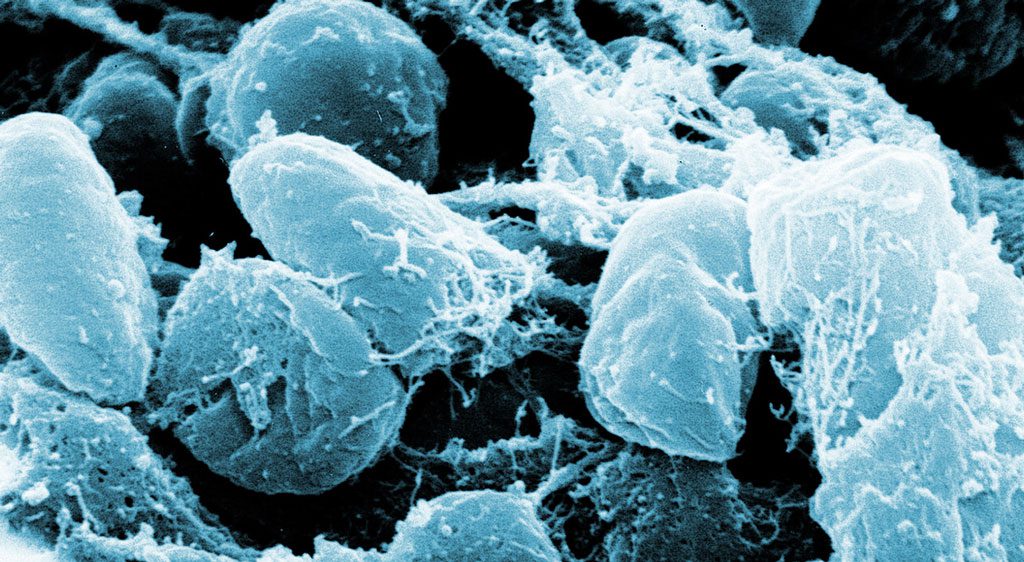Leading scientists at Defence Science and Technology Laboratory have made an exciting new discovery in the fight against some of the world’s deadliest biological threats.
Working in collaboration with industry, academia and the Defence Threat Reduction Agency (DTRA), an antibiotic developed to treat urinary tract infections has been shown by Dstl researchers to be successful at treating a broad spectrum of diseases including plague, and melioidosis.
The antibiotic, finafloxacin, is being developed by MerLion Pharmaceuticals for the treatment of urinary tract infections but its unique method of action has led to an improvement in activity when compared to comparator antibiotics.
Finding an antibiotic that works against a range of pathogens is really exciting. It has been almost 10 years of research, which would not have been possible without the collaboration between Dstl, MerLion Pharmaceuticals and DTRA.
Sarah Harding, Associate Professor, Defense Science and Technology Laboratory
Although plague is an old disease it can still be found in certain areas of the world. Madagascar is currently in the middle of an outbreak, with patients displaying symptoms including fever, headache, chills, weakness and one or more swollen lymph nodes.
Melioidosis, also called Whitmore’s disease, is caused by the bacterium Burkholderia pseudomallei and is endemic in tropical climates, especially in Southeast Asia and northern Australia.
Research is ongoing, but scientists are confident the new antibiotic will be an alternative countermeasure to help fight deadly diseases.
Finafloxacin Is an Effective Treatment for Inhalational Tularemia and Plague in Mouse Models of Infection. Antimicrobial Agents and Chemotherapy, 18 May 2021
ABSTRACT: Infection with aerosolized Francisella tularensis or Yersinia pestis can lead to lethal disease in humans if treatment is not initiated promptly. Finafloxacin is a novel fluoroquinolone which has demonstrated broad-spectrum activity against a range of bacterial species in vitro, in vivo, and in humans, activity which is superior in acidic, infection-relevant conditions. Human-equivalent doses of finafloxacin or ciprofloxacin were delivered at 24 h (representing prophylaxis) or at 72 or 38 h (representing treatment) postchallenge with F. tularensis or Y. pestis, respectively, in BALB/c mouse models. In addition, a short course of therapy (3 days) was compared to a longer course (7 days). Both therapies provided a high level of protection against both infections when administered at 24 h postchallenge, irrespective of the length of the dosing regimen; however, differences were observed when therapy was delayed. A benefit was demonstrated with finafloxacin compared to ciprofloxacin in both models when therapy was delivered later in the infection. These studies suggest that finafloxacin is an effective alternative therapeutic for the prophylaxis and treatment of inhalational infections with F. tularensis or Y. pestis.
READ ALSO:
- Biological Effects of Quinolones: A Family of Broad-Spectrum Antimicrobial Agents Molecules
- Delafloxacin, Finafloxacin, and Zabofloxacin: Novel Fluoroquinolones in the Antibiotic Pipeline Antibiotics
- Exploitation of the bilosome platform technology to formulate antibiotics and enhance efficacy of melioidosis treatments Journal of Controlled Release
- DTRA Acquisition Forecast HDTRA112D0003001910 JAN 2022 – $4,646,158 to Ministry of Defence for Research and Development Services Efficacy of Finafloxacin Against Biological Threat Agents


